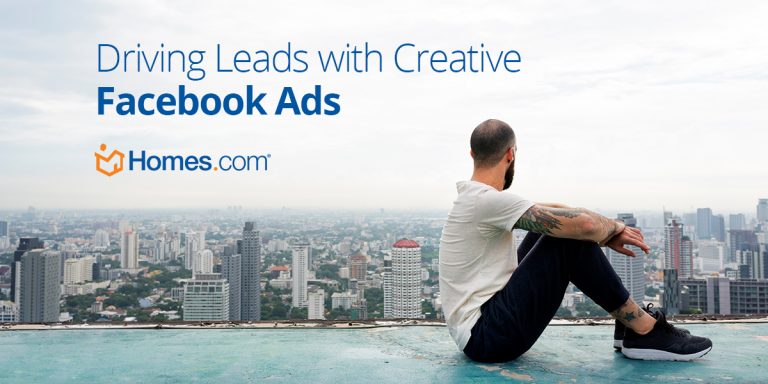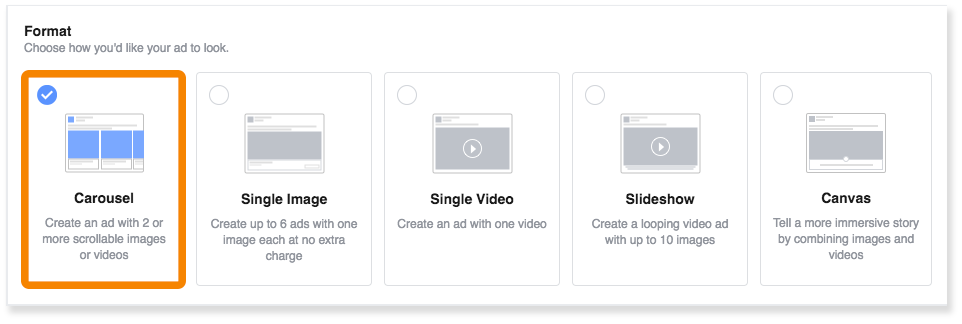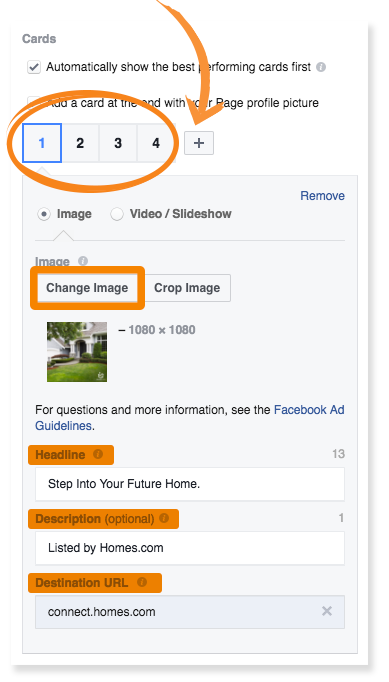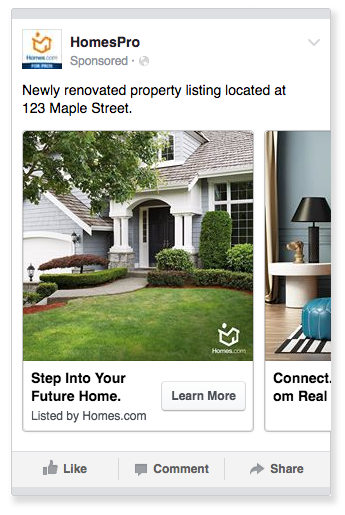You are viewing our site as a Broker, Switch Your View:
Agent | Broker Reset Filters to Default Back to ListFacebook Ads for Real Estate, Part 4: Creative Ads and Reviewing Your Insights
May 18 2017

When telling a story, you want to create a message that resonates with audiences. You want their imaginations to wander and to make them feel as if they're part of the story. Consider this an integral part of creating ads within your Facebook campaign as well, but instead of telling a story with words, tell it with images.
As a real estate pro, understanding the power of online marketing is crucial for continuous growth; according to NAR 2016 Profile of Home Buyers and Sellers, 89 percent of buyers who used the internet found photos to be very helpful.
In Part 1 of the Facebook Ads for Real Estate series, 'Creating a Business Page,' we walked you through the process of creating a business profile. In Part 2, "Campaign Objectives," we gave you a step-by-step guide to accessing your Ads Manager and selecting your campaign objective ("traffic"). In Part 3, "Audience Targeting," you learned how to set up your audience, select your ad placements, and create a set budget for your ad.
Now, in the fourth and final part of our series, we will explain how to choose the best format options to engage with your audience and how to read your ad results.
Step 3: Ad
The final step in creating your campaign is the 'ad' section. This is where you choose the photos and/or videos that will show on your audience's news feeds. You are not limited to just photos or videos; you can also design carousel, slideshow, or canvas ads.
Format Style
Carousel and slideshow ads are very similar. They both showcase multiple images and/or videos within a single ad. However, they differ in that a slideshow is a continuous loop (like a video) of images and/or videos, and carousel is a set of images/videos that places each on its own card and the target audience must swipe through the cards (up to 10 cards allowed).
First: Select an ad format. Carousel ads are the best for mobile newsfeeds and will be the format we use for our example below.

Second: Choose the Facebook Page your ad will run on. Fill out the text section with the message you would like to appear on your ad. You can be as catchy as you want or keep it simple, as shown below.

Third: Edit your cards.
- Choose how many pictures you want your carousel to have. Remember, you can add up to 10 images (keep in mind that you do not want to give away the entire walkthrough of your listing without having your audience click on your call-to-action to fill out a lead capture form).
- Insert a headline and description (which can be different on each card).
- Add destination URL (your website's lead capture landing page).

Fourth: Review the photos, descriptions, and URLs of your carousel.

Fifth: If everything is to your liking, then click 'Place Order' and you are set to go.

Insights
Once your ad is published, you can use Facebook's integrated reporting software to keep track of your ad campaigns. The reports are stored in the Ads Manager section of your business page and provide details on the following: delivery (current campaigns, ad sets, or ads running), results (based on the objective of the campaign you chose), reach (the number of people who saw your ads at least once), cost (average cost per result from your ads), amount spent (total amount of money you've spent), and the end date.

Reading the insights is quite simple. In the example above, 'Listing at 123 Maple Drive,' you will see that the ad resulted in 93 link clicks, reached a total of 21,400 people, and cost $2.30 per click. The total amount spent was $214.01 and the campaign ended on Jan. 31, 2017.
Once you understand your ad campaign results, you will begin to notice a trend in your audience base telling you whether or not certain ads are working. The reports are constantly updated, so there is no need to wait until the end of your campaign to check results.
You can further analyze your data by comparing how many people clicked the call-to-action to the amount of leads captured on your landing page while the ad was running. Also, the real time reports can be used to your advantage: if you notice that your ad reach is continuously growing but the results aren't, try editing your campaign. Maybe the target audience is too broad or too narrow, or your images and/or videos aren't creative enough to catch the attention of your audience.
Congratulations, you are ready to go out there and start creating your own Facebook Ads from start to finish!
To view the original article, visit the Homes.com blog.
More Articles in this Series









